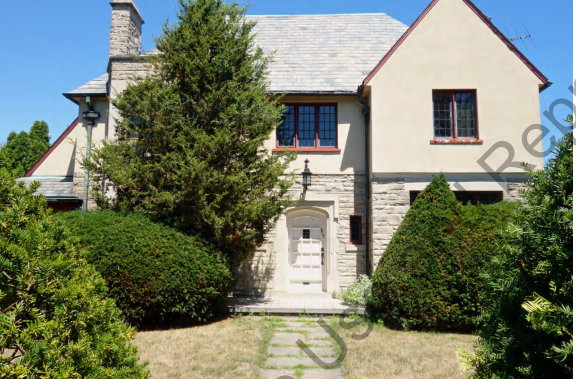Burlington’s Committee of Adjustment has rejected a request to divide a historic Aldershot property into three lots.
The new owner of 977 Unsworth Avenue, known as the George Unsworth House, now has 20 days to appeal.
The owner proposed that the historic home, on the east side of Unsworth Avenue just south of Plains Road, remain untouched on the centre lot. New, single family homes would eventually be built beside it on the newly created lots.
After a lengthy, and at one point raucous discussion, the committee ruled against the severance for two reasons. The primary concern was whether monster homes could be built on the new lots. The secondary issue was protection of the existing historic home from demolition or damage.
A neighbour, Gary Filion, had raised concerns about the height and scale of the new houses that might eventually be built. He worried that the existing zoning would permit a two-and-a-half storey monster home beside his bungalow.
“We don’t want these huge, great big places built…I don’t want somebody building a temple to their ego.”
Filion’s observation sparked a very long discussion about what size house might be allowed on the site. The owner’s representative repeatedly argued that current zoning permits single family homes to a maximum height of two-and-a-half storeys, which he claimed is completely consistent with the rest of the neighbourhood.
But committee members were not satisfied. They probed the owner for assurance that only an appropriately-sized home would be built beside Mr. Filion. They argued back and forth about what is and is not allowed. There was a great deal of uncertainty over the city’s aging zoning bylaw and its new Official Plan (OP).
One committee member even argued the opposite, insisting that single-family homes were not actually allowed on the site and that the city expected the land to be intensified with townhouses or semi-detached homes, even walk-up apartments. That comment added to the argumentative tone and confusion, causing a frustrated committee chair, John Vice, to intervene.
“We’ve been asked to consider a severance. We haven’t been asked to rewrite the OP or correct what is apparently a totally inadequate zoning provision. I urge you to stick to the issue. Does it make sense to grant the severance for the purposes of the mandate that we have been given? I don’t want to rewrite the manual for this.”
Members of the committee also wanted assurance that the historic home would be officially designated under provincial regulations, protecting it from demolition or damage. They were disappointed to learn from staff that they could not make designation a condition for the severance. Only city council can designate. Again, Chairman Vice provided clarity.
“If the city thinks this property should be designated, they have the power to do it. The property is on the A-list. That means that if anybody threatens the property, the city has 60 days to issue a notice of intent to designate. This provides protection from the neighbour’s point of view.”
In the end, despite having no jurisdiction over the zoning or the heritage designation, the vote was four to one to deny the severance request.
“There’s no joy in this whole process,”’ concluded Vice.
The Unsworth home was built in 1932, when George Unsworth established a successful 13-acre farm. His greenhouses became familiar sights in Aldershot. According to one heritage study, “Unsworth’s specialty was vegetables, particularly tomatoes, cucumbers and lettuce, the former of which were enjoyed by the King and Queen of England during a visit in 1939.”





